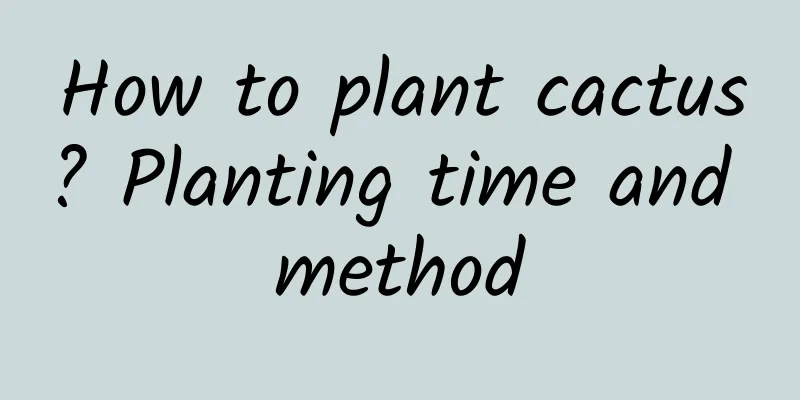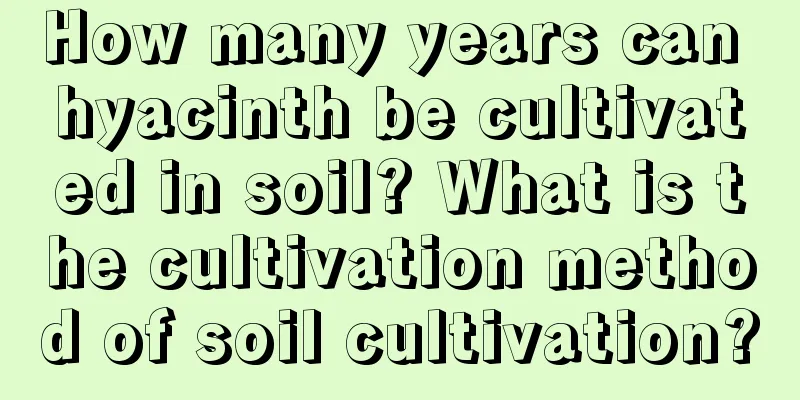When should I repot the plum blossoms? Should I water them immediately after repotting?

1. Time to change potsThe time to repot plum blossoms is generally from March to April. The climate is relatively warm at this time, which is conducive to the plant's acclimatization after repotting. It is usually done on a cloudy day. If the weather is clear, it should be done in the early morning or evening. Otherwise, the plant will be exposed to strong light after repotting, which can easily cause it to lack water and affect its future development. 2. Does it need watering?Plum blossoms generally need to be watered thoroughly after being repotted. Since you often have to stop watering for a few days before repotting, and don't water for a short period of time after repotting, it is still necessary to water at this time. It should be noted that after repotting, the plant should be watered thoroughly, but there should be no stagnant water, otherwise it will have a negative impact on the plant's acclimatization. 3. Repotting Method1. Stop watering and remove the pot: Before repotting the plum blossom, you usually need to stop watering for a few days. This will allow the soil to dry and make it easier to separate the soil and the pot. After loosening the soil appropriately, separate the flowerpot from the soil and take the plant out of the pot. Be careful when removing the plant from the pot to avoid damaging its roots. 2. Preparation of potting soil: Plum blossoms like loose, fertile, acidic soil, so the potting soil needs to be prepared before planting. Generally, a mixture of leaf mold, garden soil and river sand is used. Leaf mold can provide nutrients and ensure appropriate pH, while river sand can increase drainage, which is very helpful for plant growth. 3. Pruning and potting: Before planting the plum blossoms in the pot, you can prune them appropriately, remove some of the old soil, expose its roots, cut off all old and dead roots, and check whether there is any rot. Cut off the rotten roots and apply carbendazim for disinfection. After pruning, you can pot the plant. Place the plant in a new pot and fill it with the prepared soil. 4. Subsequent maintenance: After the plum blossoms are potted, they need to be watered thoroughly first, and then placed in a semi-shaded place to allow it to go through the seedling acclimatization period. During the seedling acclimatization process, attention should be paid to ventilation and light avoidance, and normal maintenance should be carried out after the plant resumes growth. |
>>: Lotus potting skills, what should you pay attention to
Recommend
The fastest way to root jasmine cuttings
1. Prepare the substrate Choose a loose, well-bre...
Can aloe vera be applied directly on the face? How to apply aloe vera on the face
1. Can it be applied directly on the face? Aloe v...
Beauty refers to the years when grapes bear fruit
Introduction to Planting Beauty Finger Grapes Bea...
How to breed glutinous rice sticks
1. Planting seeds In November of each year, we ca...
The best time to transplant peach seedlings in a year
The peach tree is a tree that can be used as an o...
When do figs ripen? Pictures of figs
1. When is it mature? It usually starts to mature...
How to change the soil and pot of golden diamond
The role and requirements of changing soil and po...
What is the current prospect of flower planting in rural areas? (Which flowers are the most profitable to plant in rural areas?)
What is the prospect of planting flowers in rural...
The growing environment and local conditions of pitaya
Dragon fruit growth environment and conditions Dr...
How many times a year can lettuce be planted? It takes several months from planting to maturity.
How many crops of lettuce are planted in a year L...
How to breed Cross Star Brocade
1. Beheading The main way to propagate the Cross ...
Can ice plant be grown in summer?
Ice plant, also known as ice grass and crystal ic...
Cultivation methods and precautions of Detang flower
How to grow Ditang flower soil Deutzia is not ver...
Can pineapple peel be used as fertilizer?
Pineapple peel as fertilizer Pineapple peel can b...
Are the leaves of the spider plant old and dry? Use this trick and you will be green immediately
The main reason is that the air humidity is too l...









